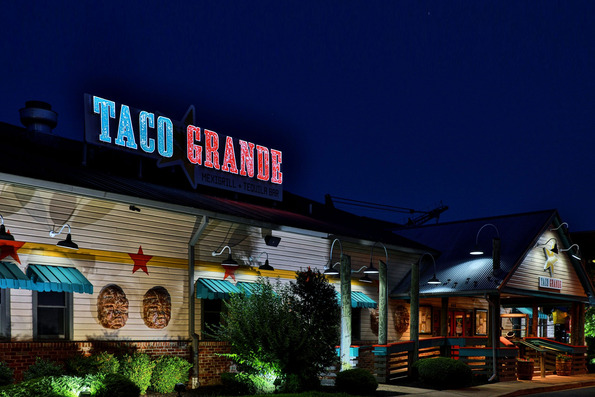The Pros and Cons of Illuminated Signs for Your Business
Illuminated signs are a popular choice for businesses looking to make a lasting impression and make their business stand out. There are a wide variety of options from the timeless charm of neon signs to the more modern and efficient LED signs. As well as backlit signs. In this article, we’ll delve into the benefits and drawbacks of illuminated signs, focusing on factors such as energy efficiency, visibility, and maintenance.

Pros of Illuminated Signs:
1) Enhanced Visibility
A primary advantage of an illuminated sign is their enhanced visibility, especially during the darker hours. These signs are designed to capture the attention of passersby, making them ideal for businesses open late into the evening or to keep a business top of mind even after hours.
2) Brand Exposure
Businesses can use illuminated signs to reinforce their brand identity and make a memorable impression. They can be a powerful marketing tool by displaying your logo, company name, and even specific messages.
3) Customized Design Options
Illuminated signs come in various forms, including neon signs, LED signs, and backlit signs, each offering unique design possibilities. Whether you’re aiming for a vintage, retro look with neon or a sleek and modern appearance with LEDs, there’s an option to suit your brand’s aesthetic.
4) Energy Efficiency (LEDs)
Among illuminated sign types, LED signs are recognized for their energy efficiency. LEDs consume significantly less energy than traditional neon signs, helping businesses reduce their environmental footprint and save on energy costs.
5) Longevity
Properly maintained illuminated signs have a longer lifespan compared to non-illuminated options. Especially LED signs as they last for many years without the need for frequent replacements.
Cons of Illuminated Signs:
1) Higher Initial Costs
The upfront costs of illuminated signs, especially neon and LED signs, can be higher than non-illuminated alternatives. However, businesses should consider outdoor digital signage cost as a marketing investment as they will increase a business’s visibility.
2) Maintenance
While illuminated signs are generally durable, they do require periodic maintenance to ensure they remain in optimal condition. Burned-out bulbs, weather-related wear and tear, and electrical issues may necessitate repairs, which can be costly.
3) Energy Consumption (Non-LED)
Non-LED illuminated signs, such as neon, tend to consume more energy. This can result in higher electricity bills, making them less energy-efficient than their LED counterparts.
4) Environmental Impact (Non-LED)
Neon signs contain gases and materials that can be harmful to the environment if not disposed of properly. LED signs are a more eco-friendly choice in this regard, as they don’t contain hazardous substances.
5) Light Pollution
Excessive illumination can contribute to light pollution, which may disturb the natural environment and negatively affect the quality of life for nearby residents. Careful consideration of the sign’s placement and brightness is essential to mitigate this issue.
Illuminated signs offer a range of benefits for businesses looking to enhance their visibility and brand exposure. However, these advantages must be weighed against the drawbacks, such as initial costs, maintenance requirements, energy consumption, and potential environmental impact.
Ultimately, the choice of an illuminated sign should align with your business’s branding, energy efficiency goals, and budget. When selected and maintained thoughtfully, illuminated signs can be a powerful tool for drawing attention and leaving a lasting impression on your customers.

